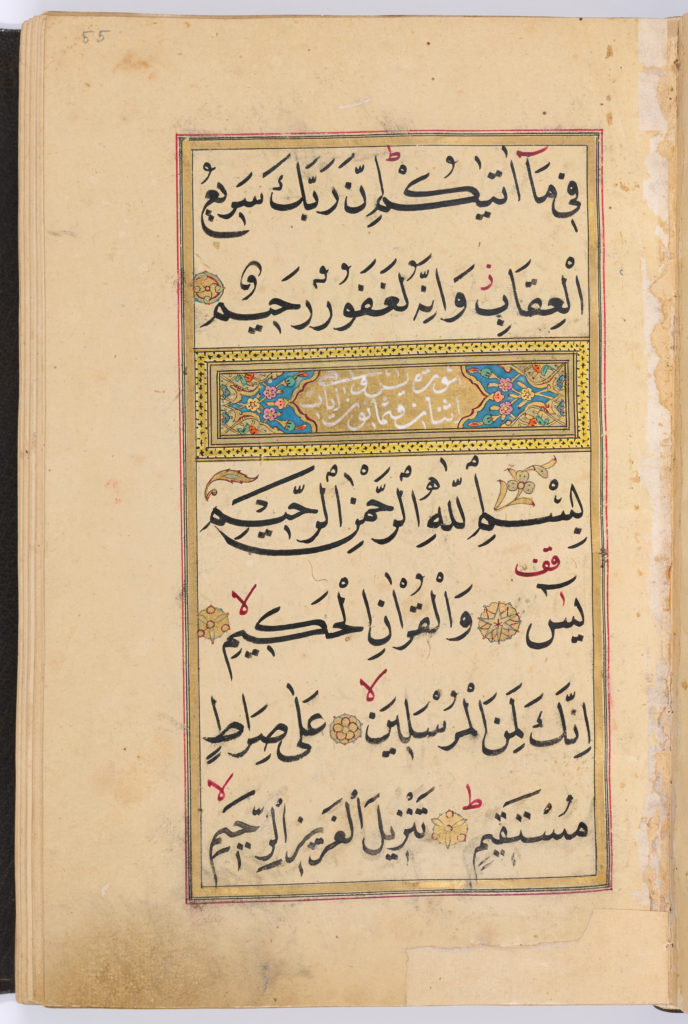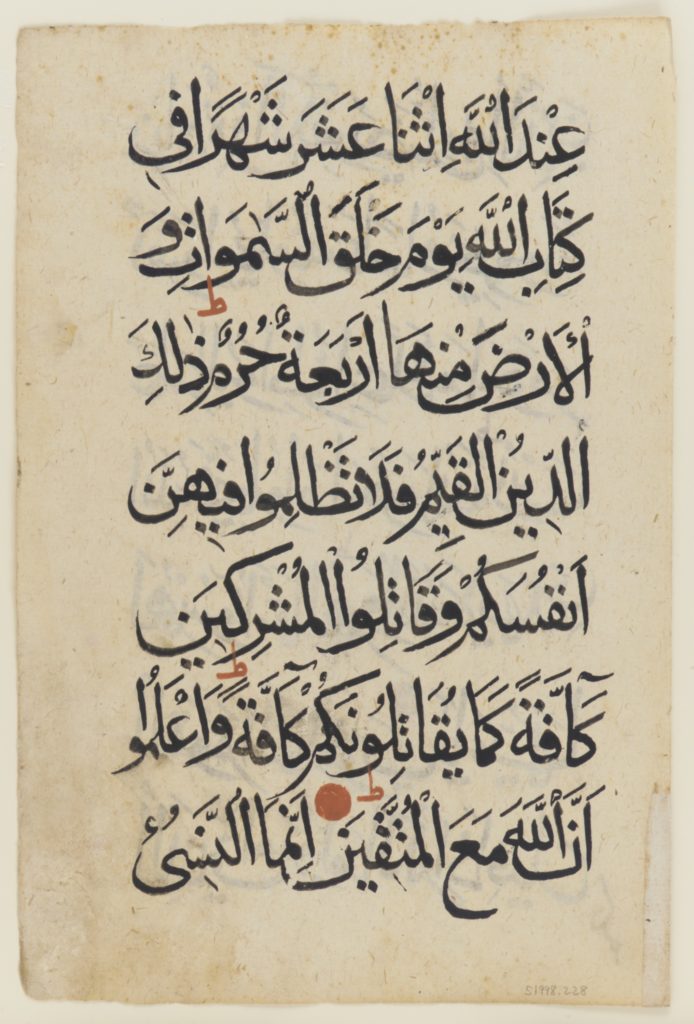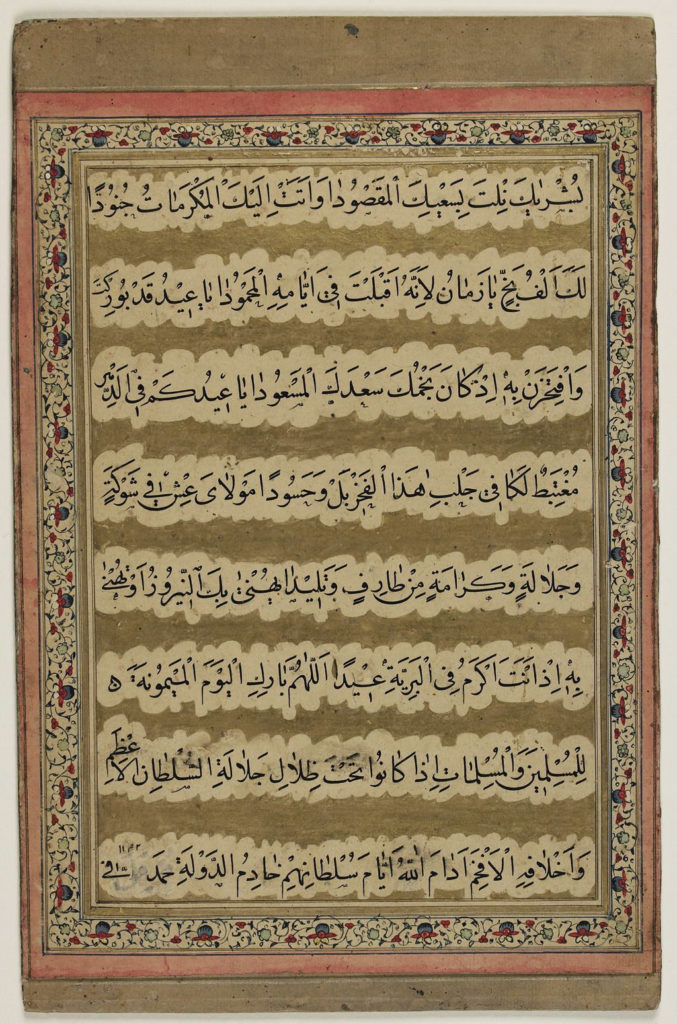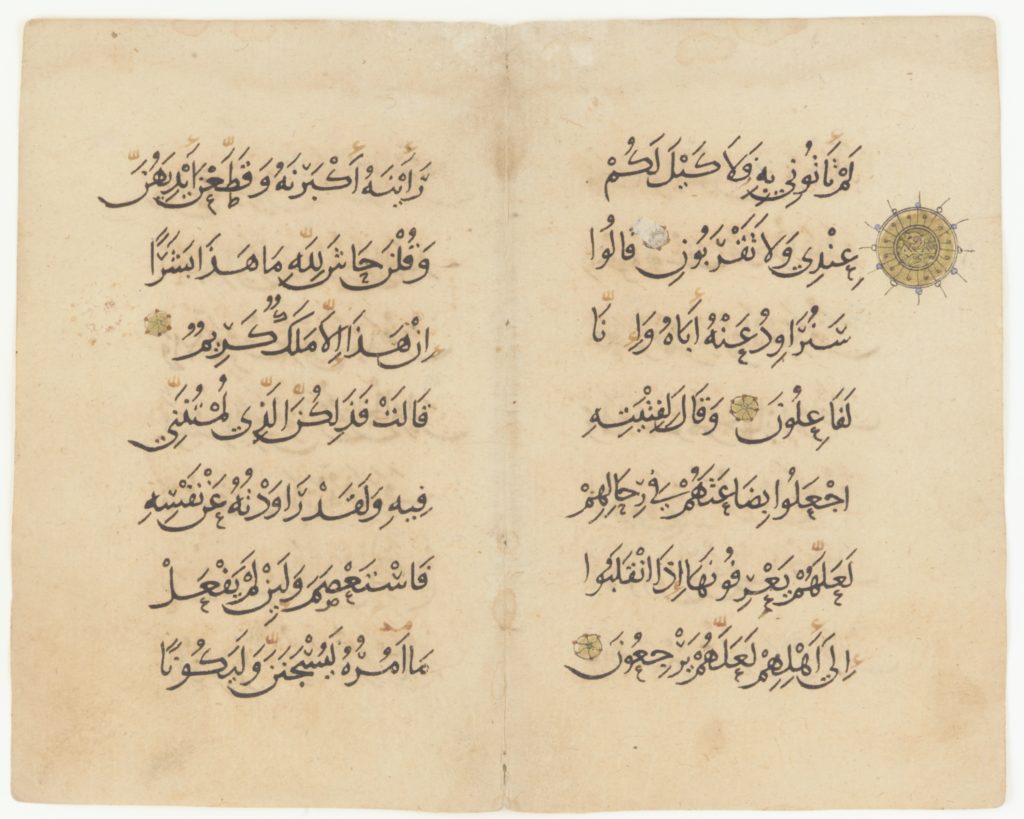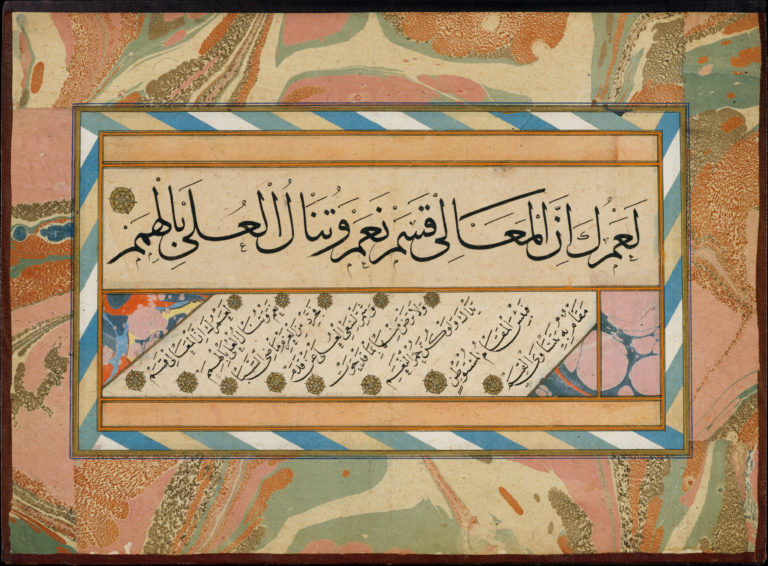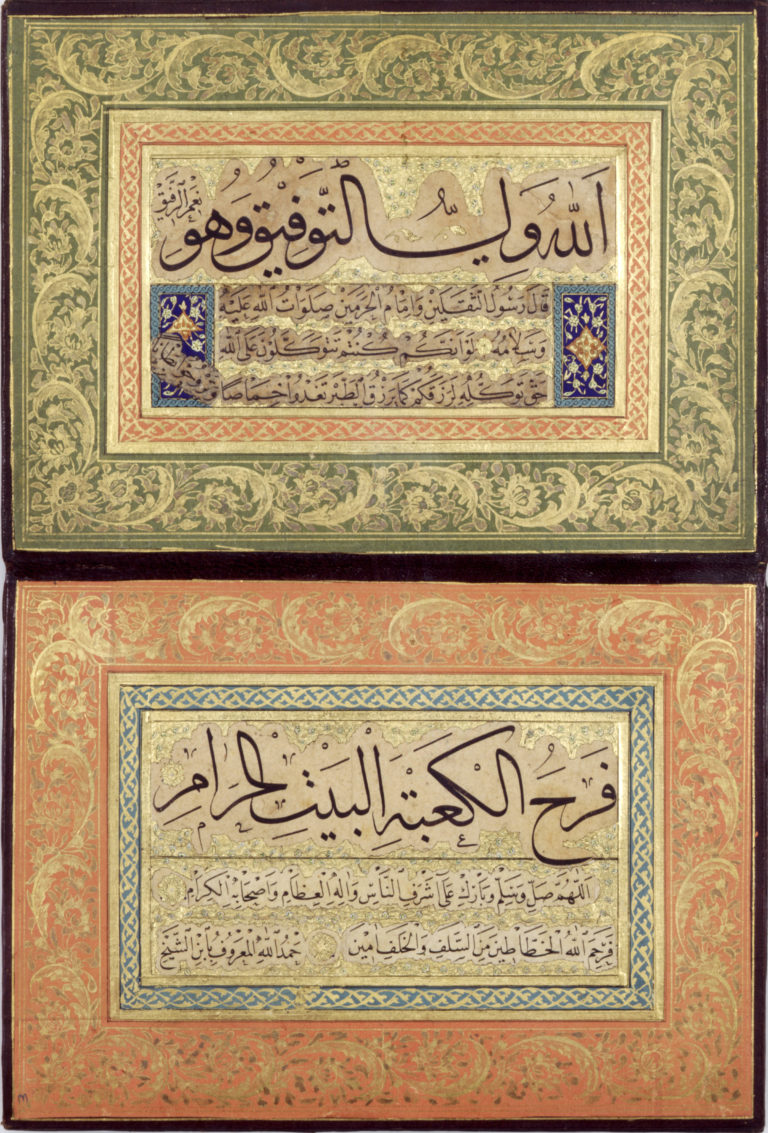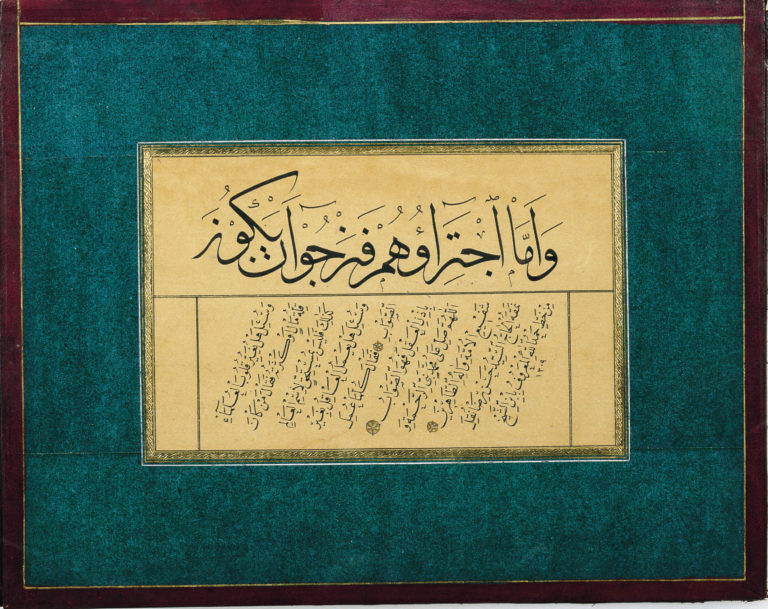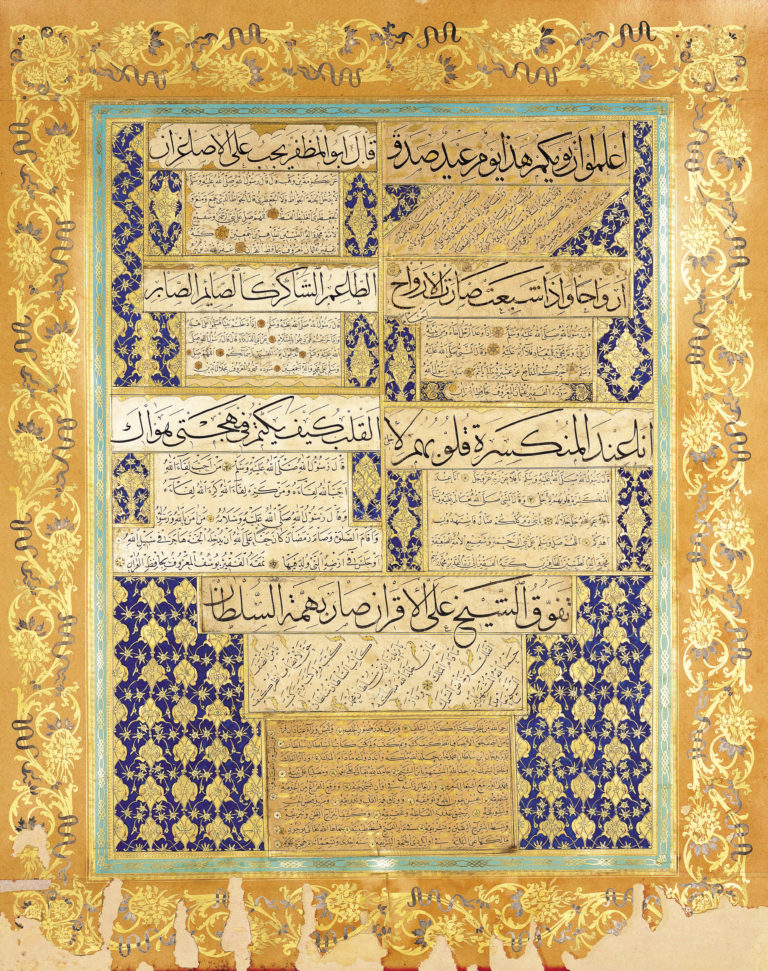Naskh
(Pronounced “nask”; Turkish–Nesih)
Meaning
- “Naskh” is derived from the verb “nasakha,” meaning “to transcribe or copy”
Uses
- Naskh eventually replaced Kufic as the script of choice for the Qur’an; now more Qur’ans are written in Naskh than in all other scripts combined
- Popular for writing books because of its legibility
- Adapted for printing, it is still the most common font in printed Arabic
Companion script
- Thuluth is the larger script often used in conjunction with naskh
Timeline
- Developed in the 10th century
- Refined by Şeyh Hamdullah in the 15th century
- Still in use today
Distinctive characteristics
- Small script, neat and balanced
- Letter shapes are more fluid and curved than rayhani
- Letters lean slightly to the left
- Descending letters end in an upward hook
- Equal division between flat and round shapes and heavy and light strokes
- Highly legible, clear and quick to write
Notes
- Called the “servant of the Qur’an” because it is used so often for copying this holy book
- Because the letter shapes in naskh are based on different proportions than the other scripts, it is hard to learn to write naskh well
